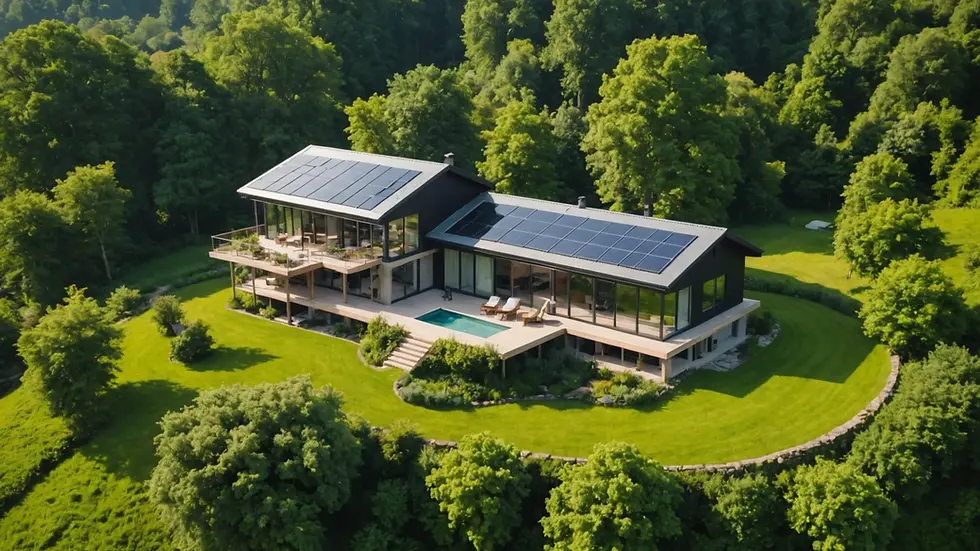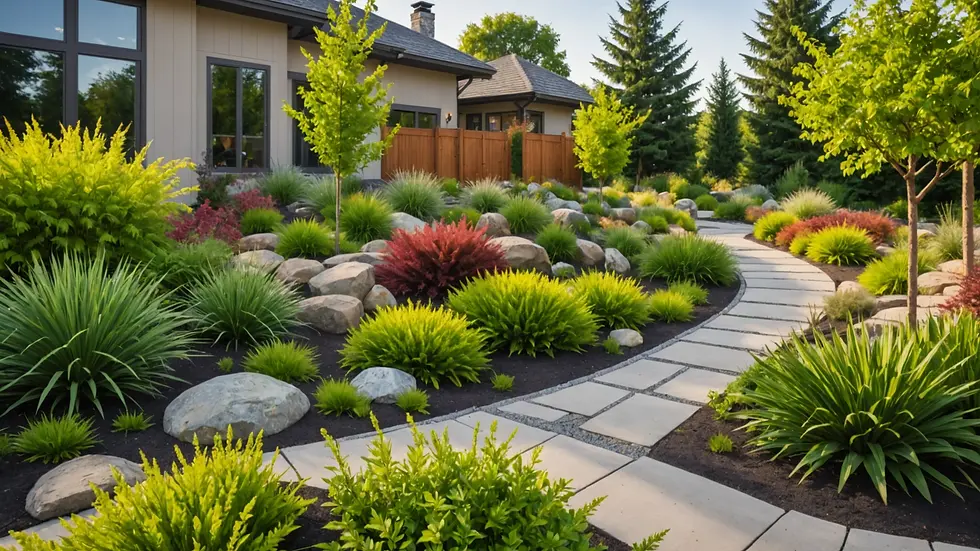Uncovering the Secrets to Building a Home that Stands the Test of Time: A Professional's Guide to Future-Proof Design
- Eng. Evans Nusu

- Feb 27
- 4 min read
Designing a home that can endure the growing uncertainties of climate, economy, and technology is crucial now more than ever. A future-proof home does not just aim to fulfill current needs but plans for what lies ahead. This post presents key strategies and practical tips to help you create a residence that is robust, adaptable, and prepared for whatever the future holds.
Understanding Resilience in Home Design
Resilience in home design means creating a structure that can withstand and recover from various challenges, such as natural disasters, economic shifts, and lifestyle changes. It includes choosing sustainable materials and integrating smart home features, but it is more than durability. For instance, homes in areas prone to harsh weather must balance safety with comfort, ensuring they remain functional and valuable over time.
Statistics show that homes designed with resilience in mind can withstand extreme weather events and sustain their value better than traditional homes. For example, homes built above flood elevation have a significantly reduced risk of water damage.
Choosing the Right Location
Proximity to Risks
Selecting the right location for your future-proof home is about understanding environmental risks. For instance, homes in flood-prone areas may need elevated foundations and waterproof materials. A study by the National Oceanic and Atmospheric Administration shows that about 39 million people in the U.S. live in areas at high risk for flooding, emphasizing the need for thoughtful location choices.
A good practice is to research local climate trends and potential hazards. Making informed decisions can safeguard your investment and ensure that your home remains viable as conditions change.
Community Infrastructure
Look for communities with resilient infrastructure, such as updated roads, reliable utilities, and accessibility to emergency services. For instance, neighborhoods with invested emergency response systems can enhance safety, leading to lower insurance costs and potentially higher property values. Statistics indicate that homes in well-planned communities often appreciate more than those in poorly structured areas.
Selecting Sustainable Materials
Durability and Longevity
Choosing sustainable materials plays a vital role in future-proof home design. Materials like bamboo, reclaimed wood, and recycled metal are not only eco-friendly but also built to last. Using these materials can reduce your home's maintenance costs—homes constructed with durable materials often require up to 25% less maintenance.
Eco-Friendly Choices
Incorporating eco-friendly materials, such as recycled insulation or natural fabrics, reduces your carbon footprint. For instance, wool insulation is not only biodegradable but offers high energy efficiency, reducing heating and cooling costs by up to 30%.
Integrating Smart Technologies
Home Automation
Smart home features enhance both convenience and resilience. Tools like smart thermostats can adjust energy usage based on occupancy, leading to savings of about 10-20% on heating and cooling bills. Moreover, smart security systems can provide real-time alerts, keeping your home safer.
Future-Ready Systems
Plan for technologies that may become standard in the future, such as solar panels or electric vehicle chargers. By incorporating these systems during construction, you ensure compatibility with coming innovations. For example, homes wired for solar energy can see up to 50% reductions in energy bills when using solar power.
Designing Versatile Spaces
Flexible Layouts
Creating a home with flexible layouts is essential as family needs evolve. For instance, designing rooms that can easily transform from a nursery to a home office can save the hassle and expense of significant renovations later.
A space designed for dual purposes enhances functionality and reflects changing lifestyles. This innovative approach not only maximizes your home's utility but can also increase its resale value by appealing to a broader market.
Multi-Generational Living
As more families choose to live together to share resources and support, it becomes essential to design spaces that accommodate various ages. Creating separate living areas with shared communal spaces can provide privacy while fostering connection. Homes that cater to multi-generational living often see an increase of up to 15% in market interest, reflecting their growing popularity.
Emphasizing Energy Efficiency
Renewable Energy Sources
Maximizing energy efficiency through renewable energy is a cornerstone of future-proof design. Homes equipped with solar panels can save homeowners an average of $20,000 over their systems' lifetimes. Additionally, utilizing passive solar design—like strategically placed windows—can further enhance energy efficiency.
Efficient HVAC Systems
Investing in energy-efficient HVAC systems is critical for maintaining comfort while reducing energy usage. High-efficiency systems cut energy consumption by up to 50% compared to standard models. These systems not only lower utility bills but also contribute to a greener environment.
Creating Outdoor Resilience
Landscaping for Protection
The landscape surrounding your home significantly contributes to its resilience. Thoughtfully designed gardens with native plants can mitigate water runoff and erosion. Research indicates that strategically placed landscaping can reduce flooding risk by up to 30%, providing both aesthetic appeal and practical benefits.
Rainwater Harvesting and Greywater Systems
Integrating rainwater harvesting and greywater recycling systems allows responsible water management, essential as water shortages become a concern. These systems can recycle up to 50% of household water, reducing utility costs while promoting sustainability.
Ensuring Structural Integrity
Quality Construction Practices
Maintaining high construction standards is essential for lasting resilience. Collaborate with skilled professionals who prioritize quality and follow best practices in building. Conducting regular inspections throughout the construction process can avoid costly structural issues later.
Choosing Resilient Design Techniques
Implementing resilient design techniques enhances structural integrity. For example, elevated foundations and impact-resistant roofing materials can help your home withstand severe weather events. Homes built with these features reduce overall damage costs and can remain habitable even after natural disasters.
Final Thoughts
Building a home that lasts takes careful planning across many aspects, from location and materials to technology and design. By applying the strategies above, you can create a resilient, versatile, and environmentally friendly home.
Investing in thoughtful design today not only protects your property but also supports a more sustainable future. Whether building a new home or renovating an existing one, embracing future-proof principles will ensure your living space remains a welcoming haven for years to come.














Comments